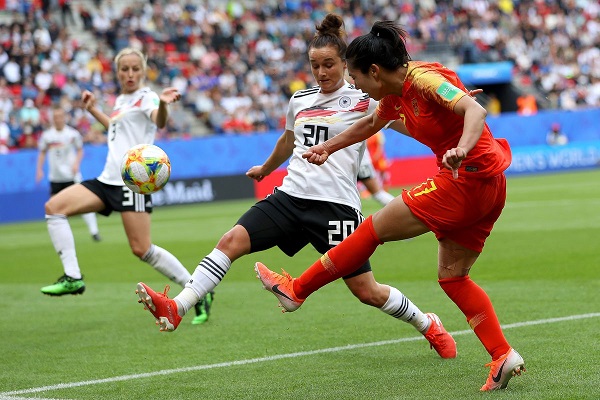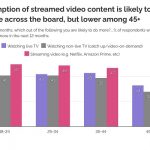Globally, women’s soccer has the highest following of any women’s sport – it’s followed by 22% of the world’s public.
FIFA Women’s World Cup’s popularity is the highest in the UAE among other markets, and nearly half the viewers (46%) are interested in this event, according to YouGov’s latest global report titled Women in Sport Report 2021.
Recently, YouGov surveyed 13 markets including United Arab Emirates, Japan, India, Germany, United States, United Kingdom to explore how women’s sport is perceived around the globe – to give marketers an inside track on identifying where the greatest value lies.
Globally, women’s soccer has the highest following of any women’s sport – it is followed by 22% of the world’s public. Badminton, basketball and tennis are next at 19%, 18%, and 17% respectively. These numbers vary from market to market.
The interest in the game varies across countries with the highest numbers coming from Mexico (41%), Indonesia (39%), Italy (38%), and the UAE (35%), according to the report.
The public is almost twice as likely to watch or follow men’s sport as it is women’s. Whilst men are more likely to watch or follow almost all types of sports – women are also partly responsible for this difference too – at least in professional sport. Women are around a third more likely to watch men’s pro sport than they are women’s.
‘Supply-side’ issues are the main factors in deterring consumers from engaging in women’s sport – including low levels of media coverage, a lack of marketing and a lack of information or knowledge around women’s sport. In fact, the respondents said that they would watch more women’s sport if there were more of it on TV. 12% of this cohort are those who currently do not consume women’s sport, a figure that’s highest in the USA (26%) and UK (24%).
Many believe childhood plays a significant role in turning people onto women’s sport too. Around a third of people (35%) said playing sport as a child is likely to spur interest and, for around the same proportion (30%), having a child who played a sport is seen as a reason to engage in a sport played by women.
Big events are seen as crucial to the growth in popularity of women’s sports. In the UAE, four out of ten respondents (41%) said watching international events like FIFA World Cup or Olympic Games is a major factor that drives the interest of the public in these sports. Recommendations of friends and family and watching highlights of matches are also cited as important reasons (37% and 33% respectively). Playing sports as a child (32%) or having a child who played a sport (27%) are some of the other reasons believed to spur an interest in women’s games.
Despite a rise in women’s participation in sports, the global popularity of women’s sports is much lower than men’s sports across all the sporting categories (64% vs 36%). The difference is most pronounced in the category of professional sport with two in five (40%) saying they watch or follow men’s pro sport, while less than half that proportion (19%) said they follow the women’s equivalent.
The most popular reason people give around the world for not following women’s sport is the lack of media coverage for it (40%). Two other ‘supply-side’ issues that commonly crop up around the world are lack of marketing for women’s sport (30%) and difficulty to find games to watch (27%). Only one in four (24%) question the quality of coverage, while the speed or physicality of the game is far down the list of barriers.
Data suggest that across all surveyed markets, two in five people (41%) said they would watch more women’s sport if there were more of it on the television. UAE strides above the global average, with almost half (49%) of the respondents agreeing with this statement.
Talking about the future of women’s sport, a majority of the respondents (71%) in the UAE said there has been an enhancement in the quality of women’s games in the last five years. Many perceive there has been progress in areas like live broadcasts, the accessibility of coverage, and the sponsorship of women’s sport. However, the availability of news on women’s sport is still at the bottom of the list.
Commenting on this, Frank Saez of YouGov Sport said: “Although across the globe men’s sport is more popular than women’s, international tournaments have helped bridge the gap to some extent and driven engagement for women’s sport. Data from the whitepaper suggests that people around the globe are open to watching women’s sports if there were more of it on TV. While there is interest, the challenge is for marketers, broadcasters, and the media to work together to make women’s sport and its stories more consistently visible to the audience. Sports organizations too can help by providing media with more and better information about women’s sports and female athletes.”
However, a majority support the notion that women’s sport is making headway in a range of areas. Almost seven in ten respondents said that there has been an improvement in the quality of women’s games in the last five years. What’s more, well over half perceive improvements in live broadcasts, the accessibility of coverage, and the sponsorship of women’s sport. Exactly half said that attendance has improved. Men are 25% more likely than women, on average, to support these statements.












































































